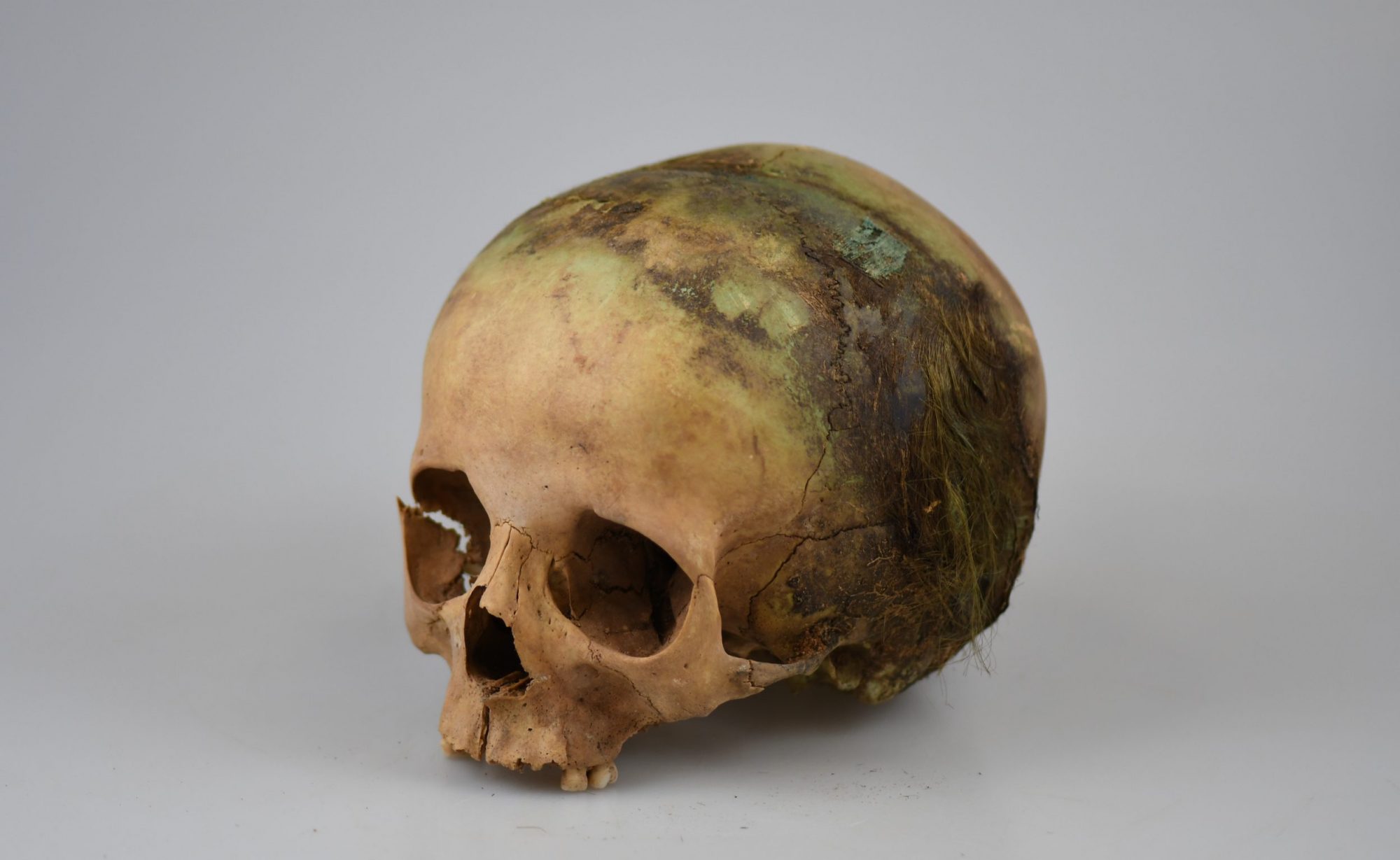The digital anthropological database contains detailed information about the skeletons or fragments of them stored in the main anthropological collection. The preservation, sex, age, skeletal and dental pathologies are described in detail. Information on the burial site, archaeological and anthropological reports, data from previous research (if any) are also provided. In addition, it shall be indicated whether animal bones have been found at the test burial site. The information is constantly updated.
Assessment of preservation
When assessing the preservation state of the remains, the overall assessment of the skull (healthy, fragmentary, deformed, reconstructed) and the skeleton (full, partial, fragmentary) of each individual is indicated. The three-point system also describes the preservation of each bone (or parts of it) as assessed by fragmentation and erosive changes in the bone surface:
- 0 – no bone or part of bone;
- 1 – well preserved (the integrity of the bone or its part is not damaged, the surface is free of erosion or minimal taphonomic changes are visible);
- 2 – moderately preserved (bone or part of it is fragmented, erosive changes are observed on the surface);
- 3 – poorly preserved (bone or part of it is very fragmentary, the surface is strongly eroded and / or porous bone material is visible).
Tooth preservation is described by the overall status of the teeth (healthy, eroded, single, complete set), as well as the number of preserved and healthy teeth in each tooth group.
Assessment of sex
Sex is determined by signs of sexual dimorphism found in the pelvic bones and skull (according to Buikstra and Ubelaker, 1994). Only the biological sex of the adult individual is assessed. There are six sex categories:
- “Male” – when the pelvic bone and skull show unambiguous male-specific morphological features.
- “Male?” (likely male) – an individual’s sexual characteristics are strongly expressed or some of them show male-specific morphological characteristics.
- “Undetermined” – the sex of an individual cannot be determined visually due to unequal morphological features or poor bone survival (fragmentation, surface erosion or lack of bone parts).
- “Female” – The individual’s sexual characteristics are strongly expressed or some of the features show female-specific morphological characteristics.
- “Female?” – when the pelvic bone and skull indicate unambiguous female morphological features.
An individual whose skeleton and teeth are not yet physically mature (bones have not finished ossifying, there are no epiphyses, or they have only partially grown, the tooth change has not ended) is considered a “non-adult”. The biological sex of such an individual is not determined.
Assessment of age
The age of an individual at the time of death is determined using all applicable modern methods of macroscopic analysis (Buiktra and Ubelaker, 1994). Changes in the clavicle and pelvic bone, ossification of cranial sutures, sternal ends of ribs are assessed.
The biological age of adults is determined at 10-year intervals (e.g., 20-29 years; 35-44 years). If the exact age cannot be determined due to bone fragmentation or erosion, wider age limits (e.g. > 40 years; adult) are provided.
The age of adult individuals is determined by tooth mineralization and eruption, skeletal development. The following age groups are distinguished: 0-4 years; 5-9 years; 10-14 years; 15-19 years; 18-20 years.
Assessment of pathological conditions
The following main groups of skeletal pathologies are distinguished: traumas, specific inflammations, non-specific inflammations, metabolic disorders, tumors, congenital pathologies, degenerative changes.
Dental pathologies are described according to standard anthropological methodology (Hilson, 2001). The following main groups of dental pathologies are distinguished: caries, antemortem tooth loss, abscesses, pronounced calculus, severe wear of occlusal surfaces.
The information stored in the database is available only to authorized users who have submitted a special form request. Summarized data on the anthropological material stored in the collection and the largest objects representing individual periods can be found in the section describing the respective period.
Data on cremated remains and the historical collection of skulls are compiled in additional databases. You can get more detailed information by contacting the listed contacts. Summarized data on these parts of the collection are provided in the sections on cremations and the historical collection of skulls.
